The Aragonese Pyrenees surprised me with their wild mix of green valleys, deep forests, hidden drylands, and tall snowy peaks. I wandered these mountains, never really knowing what the next bend would bring—a quiet patch of woodland, maybe, or the thrill of skipping over a glacial stream.
Planning a trip here isn’t just about picking a dot on the map. You have to decide what kind of adventure you want. Hikers, climbers, and snow chasers all carve out their own paradise. You can go for easy walks, guided hikes in famous places like Ordesa, or winter sports when the world turns white and silent.
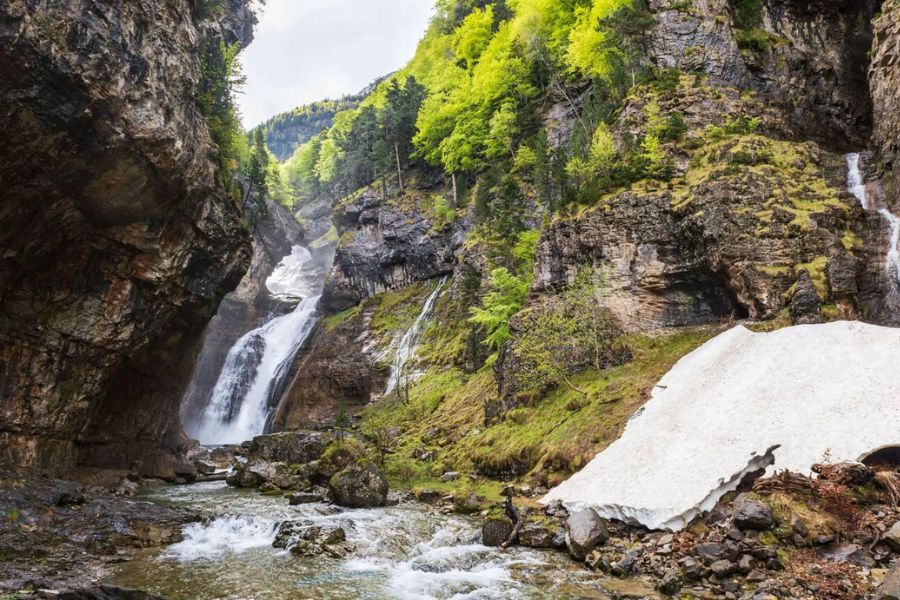
While exploring Aragón, I realized these mountains aren’t just a pretty backdrop—they’re the reason so many people keep coming back. If you’re after peace, excitement, or just an incredible view at sunset, there’s a path here that fits.
Discovering the Aragonese Pyrenees: An Overview
Mountains tower over old villages, with lush valleys shaped by rivers and a culture that’s weathered centuries. You can hike alpine trails or wander medieval streets, and each day brings something new.
Geography and Natural Marvels
The Aragonese Pyrenees sprawl across Spain’s northeast, forming a rugged border with France. These peaks soar—Aneto tops out at 3,404 meters, the highest in the Pyrenees.
Rivers like the Ebro and Cinca slice through the land, carving out deep gorges and wide valleys. Every spring, wildflowers fill these spaces with color. Glacial lakes sparkle under snowy summits, and ancient forests hug the lower slopes.
National parks like Ordesa y Monte Perdido protect these wonders. Hikers, skiers, and cyclists all find trails that snake through meadows and forests. I love catching sight of wild ibex and eagles during early morning walks—those moments stick with me.
Cultural Heritage and Local History
Stone villages cling to the hillsides, some unchanged since medieval times. In towns like Aínsa or Jaca, I can almost sense the centuries beneath my feet as I wander cobbled streets and duck into Romanesque churches.
Locals hold tight to their Aragonese roots—festivals, crafts, and food all carry hints of the region’s unique blend. Spanish and French influences mix together here, thanks to the borderland history. Old stories of kingdoms and resistance still echo through the valleys.
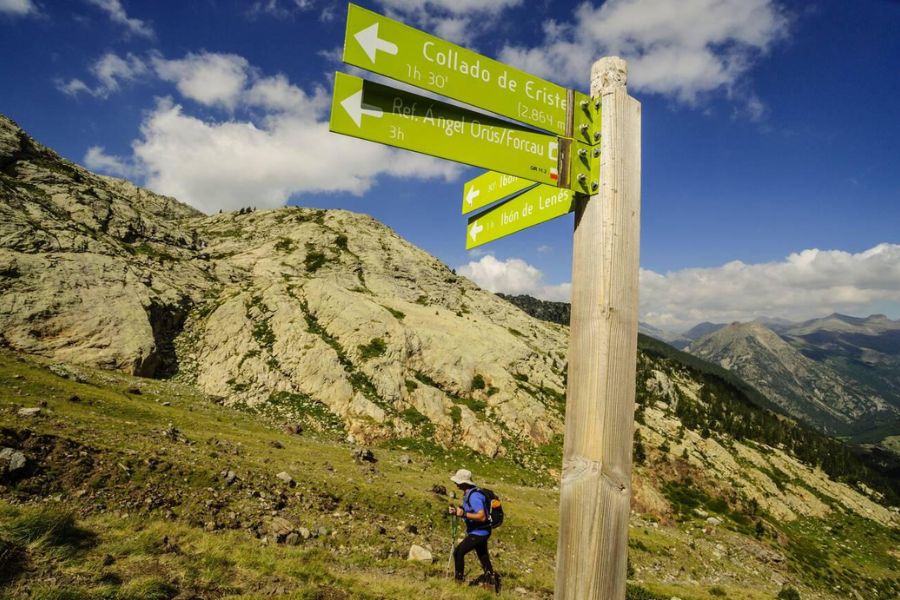
List of Heritage Highlights:
- Romanesque churches: Especially in Jaca and nearby valleys
- Medieval castles: Walls and watchtowers still stand guard
- Traditional festivals: Dance, music, and local flavors
Every village feels like a living museum, asking you to slow down and soak in the culture.
Epic Landscapes: From Valleys to Snowy Peaks
As I drive into the Aragonese Pyrenees, the scenery flips fast. One moment, I’m passing sunny fields near the Ebro; the next, I’m staring up at steep, forested slopes and jagged ridges.
Benasque Valley is a green hideaway—meadows, clear rivers, and perfect spots for a hike or lazy picnic. In winter, snow buries the high peaks. Ski resorts buzz with visitors, but plenty of trails stay quiet and wild.
Seasonal Adventures Table:
| Season | Activity | Location |
|---|---|---|
| Spring | Wildflower hiking | Ordesa Valley |
| Summer | Lake swimming, canyoning | Benasque, Selva de Oza |
| Fall | Village festivals, cycling | Aínsa, Jaca |
| Winter | Skiing, snowshoeing | Formigal, Cerler |
Each month brings something new. The changing landscape and the warmth of the people always draw me back, hungry for the next story.
Choosing Your Mountain Escape: Top Destinations
The Aragonese Pyrenees offer everything—from peaceful green hideaways to lively towns just past the snowy peaks. You’ll find small villages, dramatic scenery, and nearby cities, each with its own spin on mountain life.
Charming Villages and Hidden Gems
I realized the real magic often hides in the small, overlooked villages. Places like Ansó and Aínsa feel like time capsules. Stone houses, winding lanes, and flower boxes spill color everywhere. One afternoon, I chatted with a local in Torla, right at the edge of Ordesa National Park. The slow pace and friendly faces made me pause and just enjoy—like tearing into warm bread from the bakery.

Near the Basque border, Haute-Soule keeps old traditions alive. Trails here pass through landscapes steeped in legend. When I wanted solitude, I wandered into secret valleys that don’t even show up on most tourist maps. Every stop had its own treat—maybe a family-run guesthouse, maybe a tiny market with cheese and honey.
| Hidden Gem | Why Visit? |
|---|---|
| Ansó | Medieval streets, lively festivals |
| Torla | Gateway to Ordesa Park |
| Sallent de Gállego | Lake views, mountain cuisine |
Breathtaking Valleys and Alpine Passes
The valleys here aren’t just for the views—they’re where the best adventures start. Ordesa and Monte Perdido National Park is my top pick for wide valleys ringed by snowy peaks. Trails suit every level, whether you want a quick stroll or a full-day trek. The sound of rushing water and the scent of pine make it easy to forget the world outside.
Crossing alpine passes like Portalet or Somport meant winding up roads where every bend reveals something new—wild horses, maybe, or views stretching all the way to France. In spring, I watched pastures go from white to green, wildflowers popping up everywhere. If you love cycling or road trips, these passes are a must.
Must-Visit Towns Near the Pyrenees
Reaching the Pyrenees is simple with cities like Zaragoza and Pamplona so close. I kicked off my trip in Zaragoza, famous for its basilica and buzzing tapas bars. The fast train dropped me right into mountain country. Pamplona, with its wild bull-running festival, is smaller but full of life and a great base for the western valleys.
Sometimes, I crossed into France to see Lourdes, a town built around a beautiful sanctuary. The mix of cultures there is worth the visit. The Catalan Pyrenees pulled me east toward Barcelona, where you can hike all day and still end up wandering art galleries or the beach at night. Every city had its own vibe and easy routes to the mountains, whether I wanted mountaintop views or a night out.
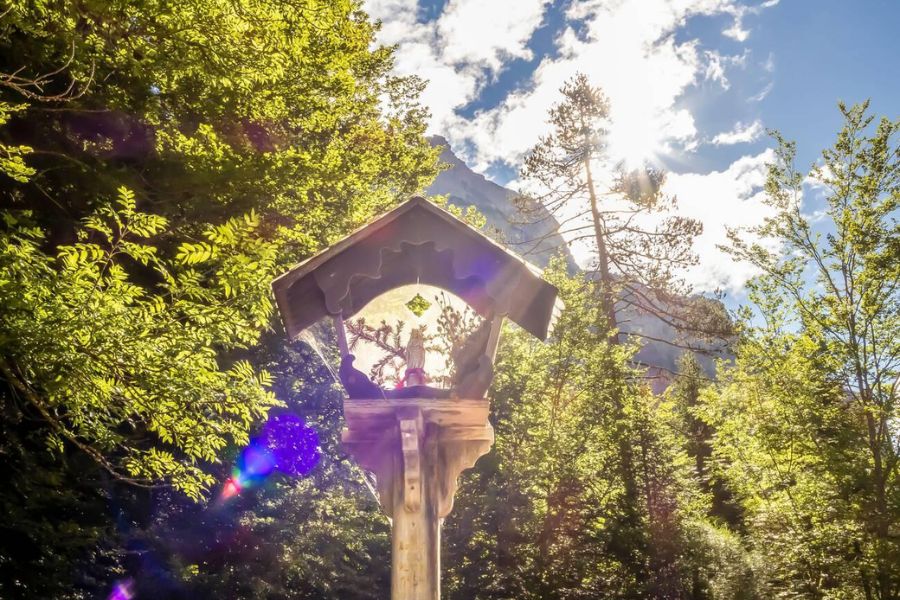
Quick Access Table
| City | Distance to Pyrenees | Notable For |
|---|---|---|
| Zaragoza | 2 hours (by car) | Culture, food, fast trains |
| Pamplona | 1.5 hours | History, festivals |
| Lourdes | 2 hours (France) | Pilgrimage site, scenery |
| Barcelona | 3 hours (to Catalan Pyrenees) | Urban-mountain mix |
Thrilling Adventures in the Aragonese Pyrenees
The Aragonese Pyrenees are a playground—lush trails, rushing rivers, snowy peaks, and endless ways to chase adventure. I found every season brought its own flavor, from hiking under green canopies in summer to flying down ski slopes in winter.
Hiking and Cycling Trails
Hiking here feels like jumping into a storybook. Trails wind through thick forests, skirt crystal lakes, and climb up to rocky peaks where the air is sharp and clean.
One of my favorite hikes, the trek to Ibón de Acherito, leads to a glacial lake ringed with rugged mountains. Ordesa y Monte Perdido National Park is another spot I keep coming back to for its scenic trails and waterfalls. Each path brings a surprise—maybe a field of wildflowers, maybe a gorge cut deep by a river.
Cyclists can pick from gentle routes in the valleys or challenge themselves on steep mountain climbs. There’s something for everyone, whether you’re just starting out or you live for the burn in your legs.
Extreme Sports: Rafting, Canyoning, and More
Adrenaline junkies flock here for white water rafting, canyoning, and other wild sports. I tried canyoning for the first time—sliding down natural water chutes, leaping into pools, and staring up at cliffs that made me feel tiny.
Rafting gets wild in spring when the snow melts and rivers swell. The rapids will definitely get your heart pumping, and teamwork is everything. If you want a bigger rush, try via ferrata—climbing rock faces using metal cables and steps bolted right into the stone. I found it both terrifying and addictive.
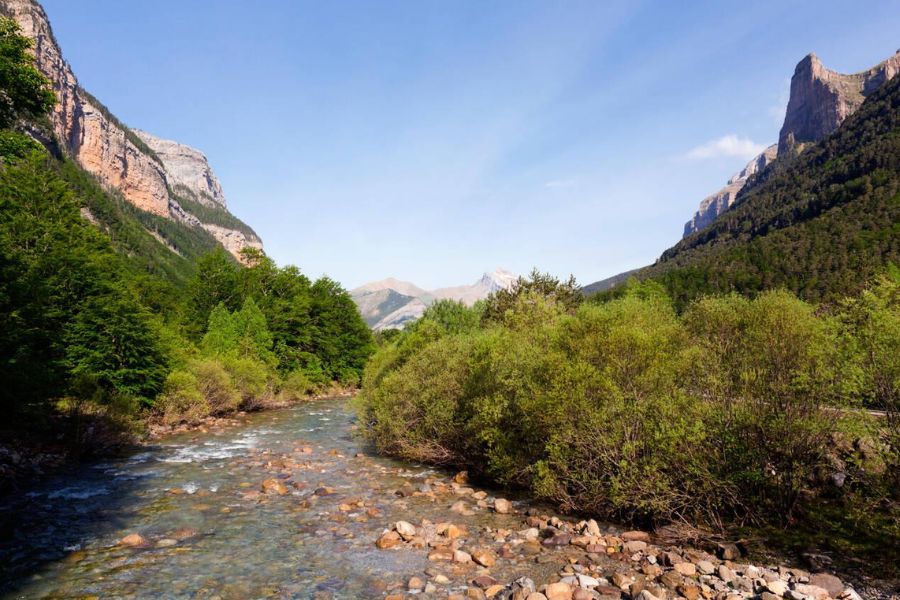
Popular Extreme Sports in the Region:
| Sport | Best Time To Try | Needed Skill Level |
|---|---|---|
| White Water Rafting | Spring/Early Summer | Beginner to Expert |
| Canyoning | Late Spring-Summer | Beginner to Advanced |
| Via Ferrata Climbing | Summer-Autumn | Intermediate |
Horseback Riding and Outdoor Activities
Riding through the valleys on horseback gave me a slower, more peaceful way to see the mountains. I trotted along quiet trails, watched eagles soar, and listened to the wind rustling through the trees.
Local guides offer rides for all ages and skill levels. The gentle pace lets you soak up every view—from deep forests to meadows dotted with wildflowers.
Besides riding, you can go climbing, birdwatching, or fishing. Families set up picnics by the rivers or rent bikes for an afternoon spin. Even a short walk can turn into an adventure, with waterfalls or deer popping out of nowhere.
Winter Sports: Skiing and Snowboarding
When winter hits, the Pyrenees turn into a snowy playground. I strapped on my snowboard at Port Ainé and later tried skiing at Espot Esquí—both resorts with reliable snow and a relaxed vibe.
There’s something for everyone on these slopes. Beginners can take it easy, while experts race down steeper runs. Snow piles up well into spring, so the season lasts.
If you want more than just skiing, you can try snowshoe hikes or even skating across open spaces. I often found the hardest part of the day was deciding whether to glide downhill or wander off the main trails. Bonaigua is another favorite, with wide views and great slopes for both skiing and snowboarding.
Planning Your Escape: Accommodations and Dining
Finding the right place to sleep and eat in the Aragonese Pyrenees made all the difference for me. Whether you want a cozy mountain lodge or a lively tapas bar, there’s something for every taste and budget.
Where to Stay: Mountain Lodges and Unique Resorts
I wanted to feel close to nature during my trip, so I picked a mountain lodge right at the base of some lush valleys. Most lodges in the Aragonese Pyrenees are family-run, and the owners make you feel genuinely welcome.
Big windows in these places let you gaze out at snowy peaks, and breakfast usually comes included. That hearty breakfast? It’s the kind that makes you want to linger a little longer at the table.
For something a bit different, I booked a night at a unique resort tucked into the hills. These resorts often mix traditional stonework with modern perks, like spas or heated pools that overlook the mountains.
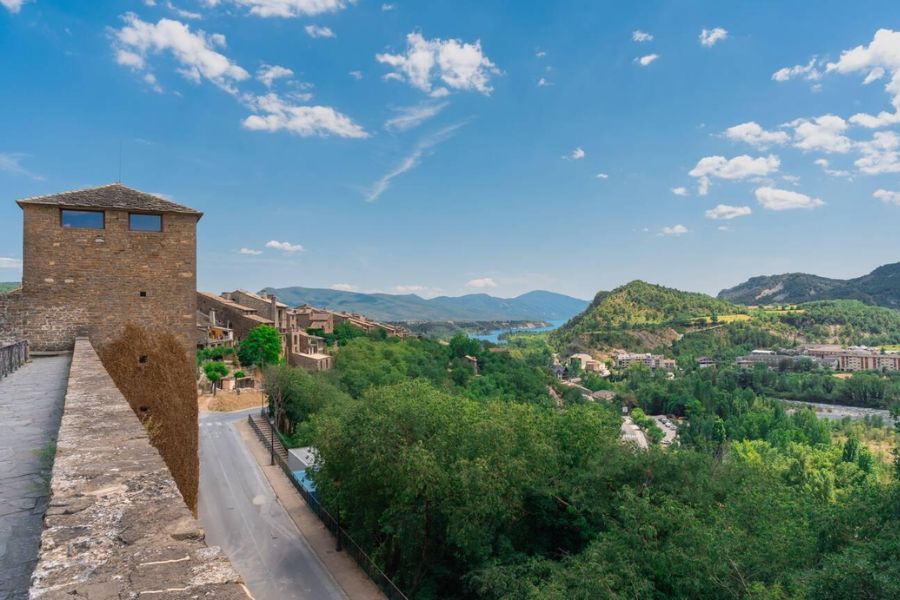
Booking sites like Agoda or Booking Holdings helped me compare amenities, read real traveler reviews, and find the best price. In quieter valleys, I stumbled across small guesthouses (casas rurales) with just a few rooms—ideal if you’re after peace and quiet.
| Accommodation Type | Highlights | Booking Tips |
|---|---|---|
| Mountain Lodge | Traditional, cozy, often includes breakfast | Look for included meals |
| Unique Resort | Spa, pools, modern comforts, great views | Book early in high season |
| Rural Guesthouse | Quiet, intimate, personal service | Contact hosts directly |
Savoring Local Gastronomy
Trying the food here turned every meal into an adventure. The Pyrenees region draws from Basque, Aragonese, and French traditions, so menus never get dull.
I especially loved hearty stews like civet de jabalí (wild boar) and migas (fried bread crumbs with chorizo). After a long hike, nothing hits the spot quite like that.
Traditional mountain lodges serve homemade meals using local cheese, meats, and fresh veggies from the valleys. Even the smaller spots take pride in their food, and the service feels personal.
Owners often come by your table to chat and suggest their favorites. Breakfasts here are a treat—crusty bread, homemade jams, and strong coffee to start the day.
Want to sample a bit of everything? Look for menus del día (set menus) at lunch. They’re filling, affordable, and let you try a few different dishes without breaking the bank.
Best Tapas and Traditional Restaurants
Wandering through mountain towns like Benasque or Jaca, I found plenty of tapas bars stacked with colorful plates. My favorite places dished up tortilla Española, cured ham, and lamb skewers right off the grill.
Locals gather at the bar after a day outdoors, and their energy is contagious. You’ll find lively conversation and maybe even pick up a few hiking tips.
Many traditional restaurants have stone walls, wooden beams, and big fireplaces—the kind of place where you can warm up with a bowl of caldo Aragonés (local soup) in winter. I used online travel apps to find reviews and directions.
Booking ahead makes sense in busy seasons. For the best experience, eat where locals eat, not just the touristy spots.
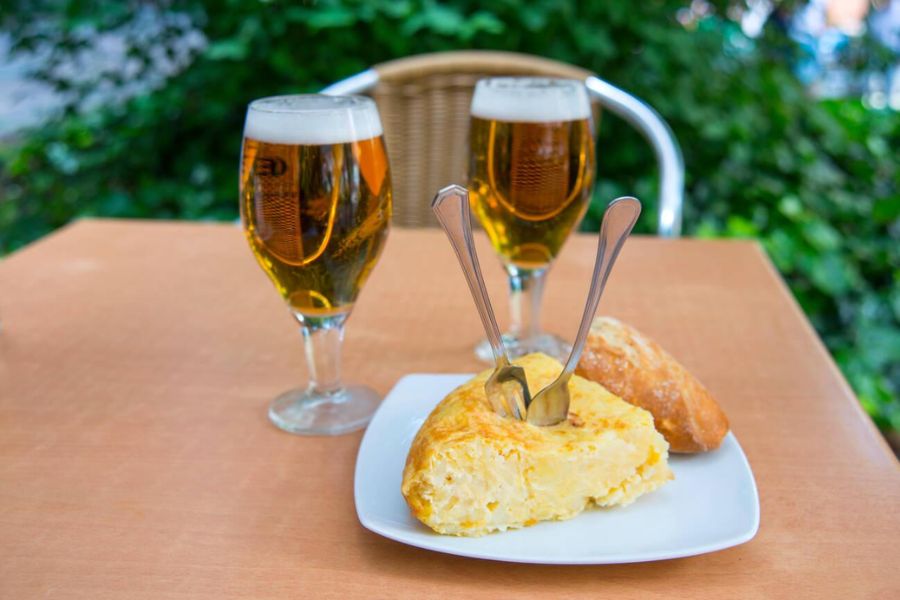
The flavors run deeper, and the service feels more sincere. Here are a few of my favorite dishes to try:
- Pollo al Chilindrón (stewed chicken with peppers)
- Trucha a la Navarra (trout with ham)
- Queso de Benasque (local cheese)
Most places offer a blend of classic and modern recipes, so every meal can surprise you.
Navigating the Pyrenees: Transportation and Day Trips
Traveling in the Aragonese Pyrenees feels like an adventure in itself. The best way to get around depends on where you’re coming from and how much you want to see.
Getting There: By Train, Bus, and Car
You can reach the Pyrenees from most major European cities, and each route has its perks. For example, I’ve taken high-speed trains from Madrid or Paris to Zaragoza or Huesca.
The Spanish AVE trains move quickly and the scenery is lovely. French trains connect to the western side of the mountains.
If you’re flying from London, Ireland, Scotland, or even Stockholm, landing in Barcelona or Toulouse saves time. Renting a car is the best way to reach remote valleys, since buses and trains usually don’t go up to the higher villages.
I rented a car in Zaragoza and really enjoyed the freedom—it let me explore small places tucked far from the big towns.
Here’s a quick comparison:
| City | Transport Method | Approximate Time | Notes |
|---|---|---|---|
| Madrid | Train + car | 3-5 hours | Direct train to Zaragoza/Huesca |
| Paris | Train/flights + car | 5-7 hours | Flights to Toulouse, then rent a car |
| London | Flight + car | 6-9 hours | Fly to Barcelona then drive |
Public Transport and Metro Systems
Public transport in the Pyrenees is pretty limited. There’s no metro system like in Budapest or Stockholm.
Local buses connect the main towns, but they don’t run often, especially outside summer. I used buses to get between places like Jaca and Aínsa, but sometimes I had to plan my whole day around their schedule.
In bigger cities like Madrid, Barcelona, or Toulouse, metro and bus networks are fast and easy. But once you’re in the mountains, most villages don’t have public transport, especially after dark.
Taxis are available, but they get expensive for long trips. When exploring smaller villages or national parks, having a car saved me a ton of time.
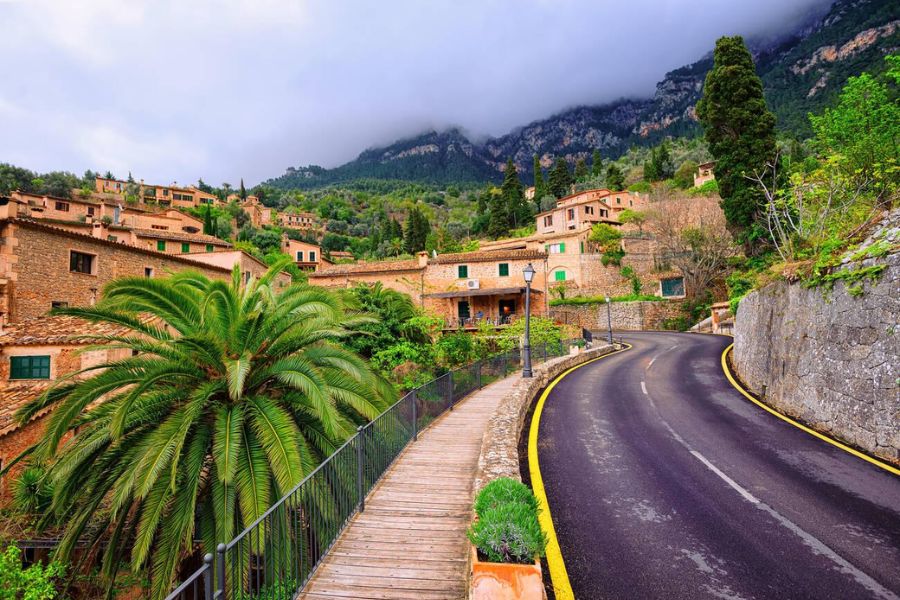
If you can’t drive, check regional bus lines, but be ready for slow travel. Sometimes, you just have to go with the flow.
Unforgettable Day Trips from the Pyrenees
The Pyrenees offer so many day trips you really shouldn’t skip. Ordesa y Monte Perdido National Park stands out for its deep valleys and snowy peaks—it’s just a quick drive from Torla or Broto.
One morning, I wandered through the medieval streets in Aínsa. By the afternoon, I found myself hiking in thick pine forests.
If you love driving, you can reach smaller gems like the remote Pineta Valley. Bielsa, a charming village near the French border, surprised me with its quiet beauty.
Foodies can cross between Spain and France to sample local cheeses and pastries at mountain markets. Even if you’re staying put in one town, guided tours can save you the headache of figuring out transportation.
If you’re craving something a bit unusual, you’ll find day trips focused on adventure sports, hot springs, or wine tasting in the foothills. Every outing felt like a fresh story—sometimes I’d cross from Spain into France, or just pull over at a viewpoint to catch the sunset.

